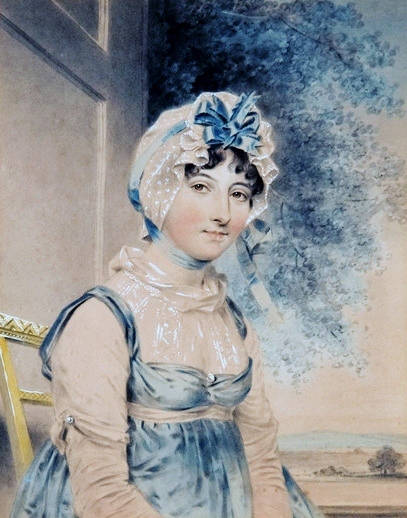Maria Edgeworth was born in Oxfordshire in 1768. Her mother died when she was five, at which point the family returned to Ireland to live on her father's estate in Edgeworthstown, Co. Longford. After living there for two years, Edgeworth was sent to boarding school in England. At 14, she returned to Edgeworthstown, where she resided for the rest of her life (with the exception of some extended trips to Britain and the continent). Edgeworth never married, and she effectively became the manager of her family's estate (even during her father's lifetime); she distinguished herself late in life for her tireless work on behalf of the starving during the Great Famine.
Edgeworths's handling of estate affairs gave her an exposure to the Irish tentantry that she often drew upon in her writings. Her Irish novels – Castle Rackrent (1800), Ennui (1809), The Absentee (1812), Ormond (1817), and Orlandino (1848, a temperance novella for adolescents) – were greatly admired by the likes of Jane Austen, Walter Scott, and Ivan Turgenev, and she has rightly earned a reputation as one of the greatest novelists that Ireland has ever produced. She is also celebrated for some of her “English society” novels, her Irish short stories (for children and adults), and a treatise co-written with her father, An Essay on Irish Bulls (1803). However, something that is often ignored about Edgeworth's career is that she wrote a number of plays. Her classic novel The Absentee actually began life as a play but was rejected by Sheridan at Drury Lane on the grounds that he didn't have enough Irish actors and that it was unlikely to be passed by the Lord Chamberlain (England's theatrical censor). Sheridan had also rejected her earlier play, Whim for Whim (1798).
Because Edgeworth had trouble getting her plays produced (a problem encountered by many women playwrights in Ireland – then and today!), her scripts always ended up being performed as “home theatricals”. That is, they were put on for family and friends at Edgeworthstown House, her family's "Big House". Of her twelve plays, five besides The Absentee have Irish interest. These include her first play, 1786's The Double Disguise, which was only published for the first time in 2014; Eton Montem from 1800, which, although set in England, features a central Irish character; two comic dramas from 1817 – Love and Law and The Rose, Thistle, and Shamrock – both of which are concerned with the notion that each country has a unique “national character”; and Dumb Andy – published in 1827 – which is (to quote Edgeworth) one of her "little plays for children". Arguably the best (and certainly the most fascinating) among these is The Double Disguise. In this play, an Irish Anglican family descends on an English inn. This gives Edgeworth the opportunity to reflect on cultural differences between the English and the Irish, gradations in social class, societal perceptions regarding disability, and gender roles/expectations.
As the author of six plays for children, Edgeworth is a pioneering figure in the field of Theatre for Young Audiences (TYA). Two of her standout plays for children are 1797's Old Poz (set in England), with its highly memorable cast of characters, and 1801's The Knapsack (set in Sweden), in which Edgeworth tries – as in so many of her works – to convince people from all social classes to show greater civic responsibility.
Plays
- The Double Disguise: A New, Composite Version (1786) (edited by David Clare)
- Old Poz (1797)
- The Knapsack (1801)
Find out more
For more on this playwright from an Irish Studies perspective, see Clíona Ó Gallchoir’s book, Maria Edgeworth [Key Irish Women Writers Series] (2021).

